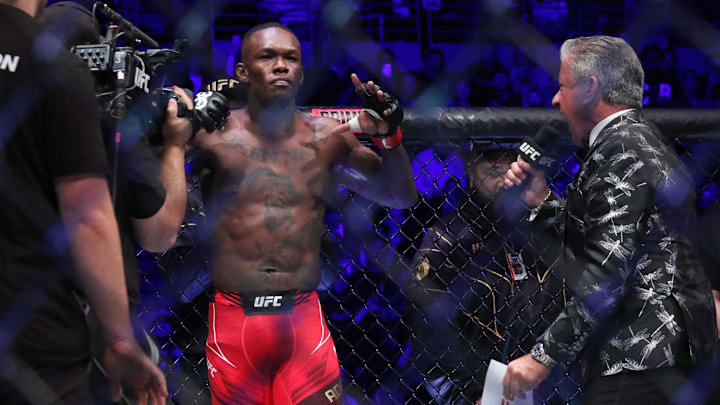Ahead of most combat sports fights, the two fighters are assigned a blue corner and a red corner, and depending on the specific sport, the meaning of these corners can vary a bit. At first glance, one might feel that being part of the blue or red corner is purely random and won't have any real implications for the associated fighters. However, learning the concept's history sheds light on the importance of corners and the major differences between the two.
So, here's everything that differentiates the red corner and the blue corner in combat sports. Historically, boxers were assigned red and blue corners randomly but the decision was a lot more significant than you'd imagine. In an open arena, the corner of the fighter determined if they would face the sun or have their back against it. This, of course, was solved as boxing and MMA events are mostly conducted indoors now.
In the black-and-white TV era of combat sports, using contrasting colors like red and blue would help promoters, corner members, and viewers identify the fighters. To be fair, easier identification is the most obvious and important use of corners and this is why the concept is still relevant.
What's the difference between the red corner and blue corner?
As times changed, broadcasters like HBO and ESPN demanded that the fighters that were more likely to win the bout get the same corner so they would adjust cameras accordingly. This, again, has become irrelevant in modern times due to a surge in production quality. This was also controversial because corners weren't supposed to create a bias among judges by telling them their favorite fighter. This explains why there have been demands to make corner allocation purely random.
In amateur boxing, the higher-ranked boxer usually gets the red corner but in Japanese tradition, the red corner is given to the home fighter while the visitor/away fighter gets into the blue corner. Interestingly, Mike Tyson once claimed that the red and blue corners originated from gang wars as fist fights took place between gang members and they used to don blue or red slashes to prove their allegiance. However, there is no other claim that supports this so take it with a huge grain of salt.
Importance of red and blue corner in combat sports currently
Currently, the red and blue corners are important to help distinguish which fighter has the better record or is higher ranked. Typically the fighter with the higher record will be in the red corner and will walk second. The only difference would be during title fights where the champion gets the red corner, and the challenger gets the blue corner.
A great example is both times Conor McGregor fought Dustin Poirier. In both fights, McGregor was in the blue corner and walked first due to Poirier ranking higher than him. Many fans didn't like this because McGregor was the draw of the fight both times. But rules are rules.
Many believe that the red corners get better cutmen and tapes, but apart from a couple of coincidences, there are no stats or incidents that back such claims. Psychologically though, red is generally associated with aggressiveness while blue is a calmer and more sophisticated color. Yet again, is it hard to argue if these things have any impact on fighters.
